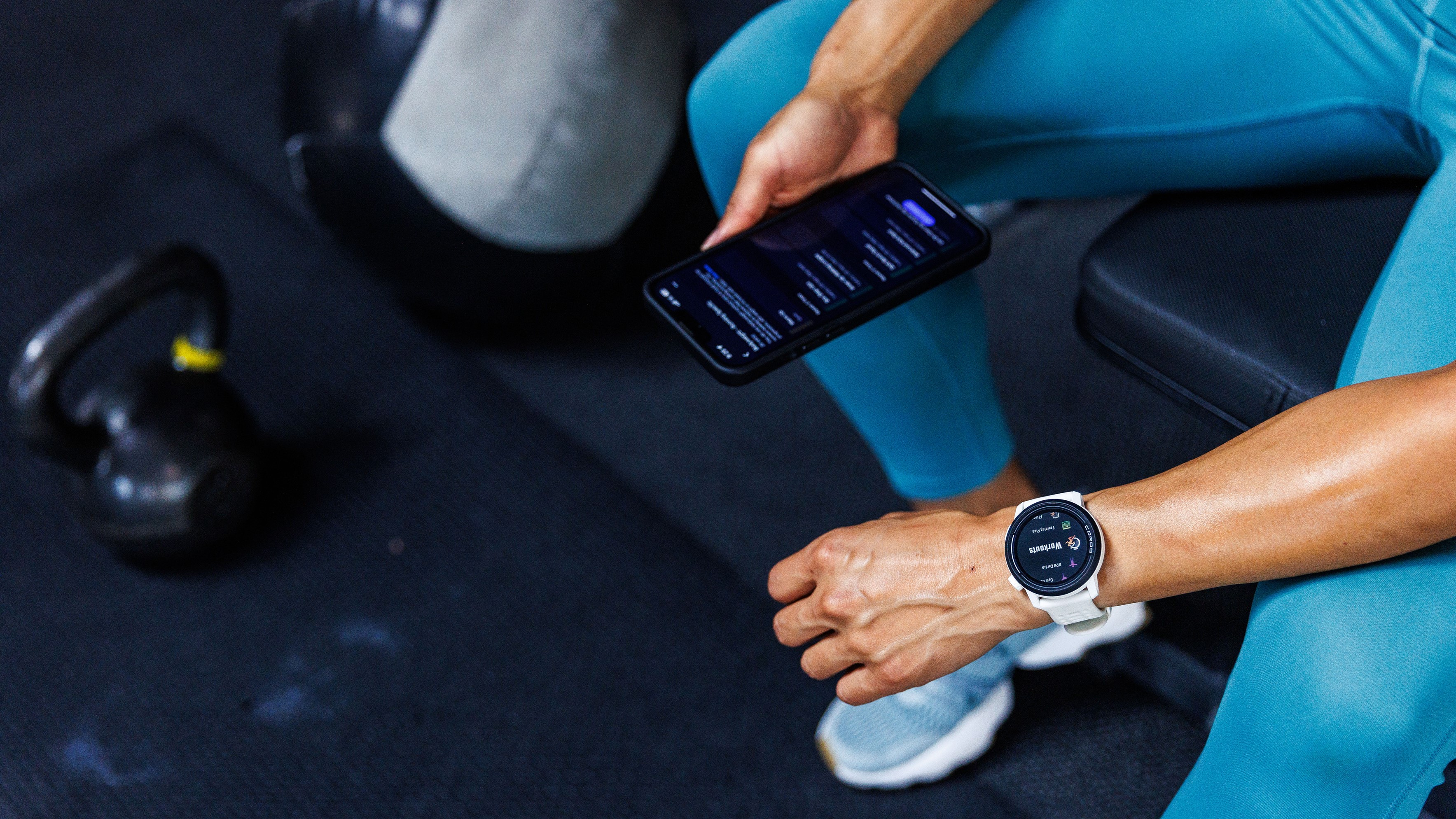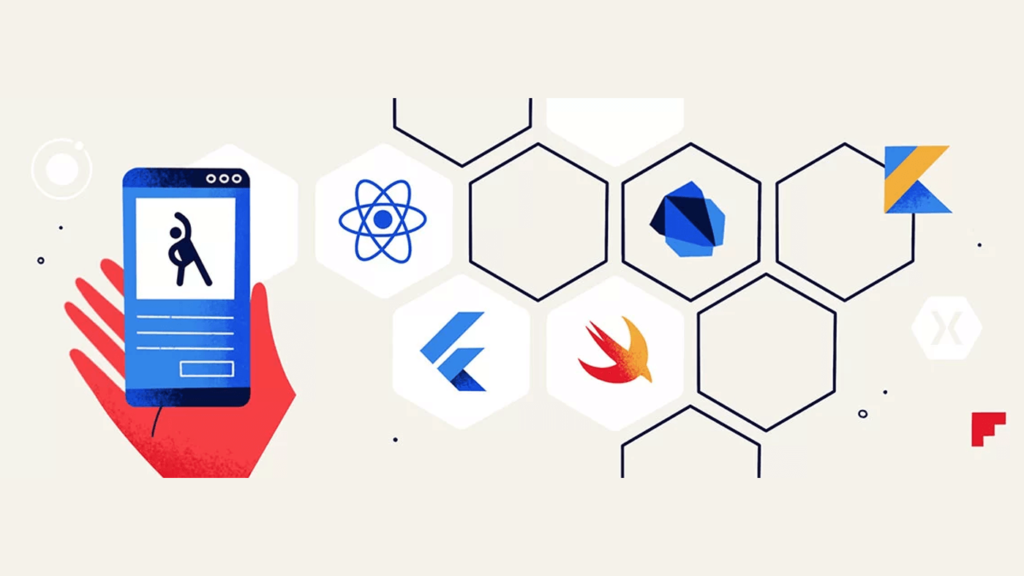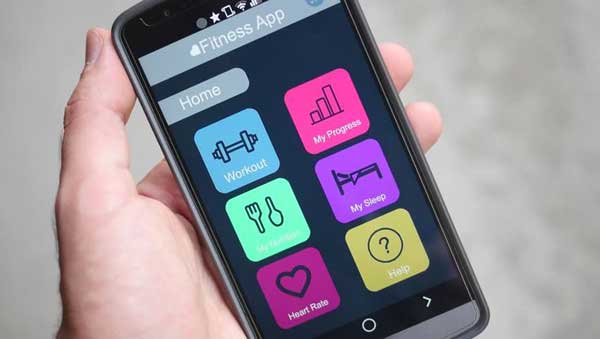How to Create a Fitness App in 2024: A Comprehensive Guide

In today's digital world, health habits are increasingly managed via smartphones, making the creation of mobile fitness apps not just timely, but essential. Picture this: an app crafted by you that enables users to track their fitness journeys, discover new wellness techniques, and stay inspired at their fingertips.
With the right guidance and tools, you can bring your fitness app idea to life more smoothly and swiftly than ever before.
In this article, we'll explore:
Identifying Your Niche: Carve out a unique space in the fitness app market to stand out and meet specific user needs.
Engaging Through Design: Develop a user interface that is not only visually appealing but also easy to navigate, enhancing user retention.
Choosing the Right Tech Stack: Select fitness application technology that ensures seamless functionality and integrates well with APIs.
Utilizing APIs to Enhance Features: Leverage extensive API options to add advanced tracking, nutritional information, and personalized workout plans to your app.
Innovating Your Monetization Strategy: Employ creative revenue strategies such as in-app purchases, subscriptions, and partnerships to drive profitability.
If you're looking to create fitness apps, API League offers a treasure trove of APIs to supercharge your app, from workout tracking to nutrition planning. Whether you're a seasoned developer or a newcomer to the app development world, we've got the intel on creating a successful and impactful fitness app.
Identifying Your Market: Choosing the Right Fitness Niche

The first step in creating your own workout app is to find your niche. This involves extensive market research to identify gaps in the current market. Are there underserved segments within the fitness community?
Perhaps busy professionals who need quick workouts, or maybe new mothers looking to get back into shape in a supportive environment. Understanding these needs allows you to tailor your app’s features to the specific demands of your users.
Top five niches in fitness app development:
Mindfulness and Mental Wellness: 76% of users say mobile mindfulness apps have improved their mental health.
Targeted Demographics (Seniors, Pregnant Women, Teenagers): Fitness and workout app usage among seniors increased by 30% in the past year.
Home Workout and Remote Fitness: Home workout apps saw a 230% increase in downloads during global lockdowns.
Corporate Wellness: Corporate wellness programs are utilized by 80% of large companies to reduce healthcare costs.
Diet and Nutrition Apps: Apps focusing on diet and nutrition witness a 40% higher retention rate compared to general fitness apps.
Market research is essential because it helps ensure that your app meets real needs and has a potential market ready to engage. Here are a few types of market research that can help you understand your audience better:
Surveys and Questionnaires: Quick and effective, these tools can gather large amounts of data about the preferences, habits, and desires of potential users.
Focus Groups: Bringing together small groups for discussion can provide deeper insights into user needs, preferences, and potential features that could make your fitness app stand out.
Competitor Analysis: Examining what existing workout apps are offering helps identify what’s missing in the market, giving you a clear direction for differentiation.
Interviews: One-on-one discussions with members of your target audience can yield detailed user stories and pain points, guiding the development of your app’s features.
Each of these research methods offers valuable insights that can shape your fitness app into a must-have tool for your chosen niche, ensuring it’s perfectly aligned with what users want and need.
Pro Tip: Use analytics tools to refine your app based on real user interactions, boosting satisfaction and retention.
User-Centric Design: Crafting an Intuitive App Experience

Understanding User Experience (UX)
User Experience (UX) refers to how a user interacts with your app and how satisfactory or pleasant that interaction is. A good UX design ensures that users find your fitness app features are not only functional but also enjoyable, which is crucial for maintaining long-term engagement.
Here are a few key elements to focus on:
Ease of Use: The app should be intuitive, allowing users to navigate and perform tasks without confusion.
Accessibility: Design your app so everyone, including users with disabilities, can use it easily.
User Feedback: Implement mechanisms where app users can report issues or suggest improvements, showing that their input shapes the app.
Enhancing User Interface (UI)
User Interface (UI) is about the look and layout of your app. It involves the design of each screen, button, and user interaction point. An effective UI is visually appealing and aligns with the brand identity, encouraging longer usage times and deeper engagement. Consider these elements:
Consistency: Keeping a consistent design throughout the app enhances usability, boosts user confidence, improves aesthetics, reduces errors, and makes it more predictable and easier to use.
Aesthetics: Use attractive colors, fonts, and layouts that not only look good but also highlight key functionalities.
Responsiveness: Ensure your UI design is responsive across different devices and screen sizes for a seamless user experience.
Leveraging Motivational Tools
Motivational tools are essential for fitness app development as they help keep users engaged and committed to their fitness goals. Motivate your users in the following ways:
Achievement Badges: Reward users with digital badges for completing workouts, reaching calorie goals, or achieving new levels of fitness. This provides a sense of accomplishment.
Progress Tracking: Offer visual representations of user progress, such as graphs or progress bars, to give users a clear view of their achievements and areas for improvement.
Social Sharing: Allow users to share their successes on social media directly from the app. This not only motivates the user but also promotes your app organically.
Custom Alerts: Send personalized messages or notifications to encourage users to remain active or congratulate them on meeting specific goals.
Leaderboards: Introduce a competitive element by displaying user rankings based on their achievements which can foster a community feeling and encourage further engagement.
By meticulously designing both the UX and UI of your fitness app and incorporating various motivational tools, you can create an environment that fosters user loyalty and promotes consistent usage, ultimately leading to a successful app in the competitive fitness market.
Tech Stack Decisions: Choosing the Right Tools for Your Fitness App Development

Selecting the appropriate technology stack is critical for ensuring your fitness app performs well, scales effectively, and integrates smoothly with external services. Here’s a simplified approach to making this important decision:
Native Development
Opt for Swift (for iOS) and Kotlin (for Android) if your app needs to handle demanding tasks like intensive graphics and complex calculations.
These programming languages are tailored for their respective platforms, offering optimal performance, stability, and access to advanced device features.
They're best for apps requiring fast response times and sophisticated graphic capabilities.
Cross-Platform Frameworks
Consider using frameworks like React Native or Flutter if you prioritize:
Speedy Development: These frameworks increase the speed of app development, allowing you to use a single codebase to deploy on both iOS and Android.
Cost-Effectiveness: Save on development costs by writing one set of code that works across multiple platforms.
Consistency Across Platforms: Despite being cross-platform, these tools help deliver a user experience that feels native to each platform.
By choosing the right development approach, you can save time and resources while still delivering a powerful and efficient fitness app that meets your users’ needs.
Enhancing App Functionality with World-Class APIs

Integrating your fitness app with external APIs and services is essential not only for seamless app functionality but also for expanding its features. By leveraging a variety of fitness-related APIs, you can enrich your app with essential functionalities and provide users with a more comprehensive experience.
Here’s what APIs bring to your fitness app:
Advanced Activity and Workout Tracking: Provide detailed tracking of user activities and workouts, complete with insights and progress updates. Activity tracking apps extend beyond basic step counts to offer a comprehensive overview of workout effectiveness.
Comprehensive Nutritional Information: Enable users to access a vast database of nutritional data, helping them monitor their dietary intake and make informed food choices aligned with their fitness goals.
Holistic Health and Wellness Monitoring: From basic heart rate monitoring to detailed sleep pattern analysis, these APIs give users a complete view of their health and wellness.
GPS Tracking for Outdoor Activities: Enhance the user experience for outdoor enthusiasts with GPS tracking that maps running routes, biking trails, and more.
Real-Time Health Monitoring with Wearable Devices: Seamlessly connect with wearable devices to provide users with real-time health metrics in their own mobile app.
AI-Driven Personal Training Modules: Use AI technology to create personalized training programs that adapt to user performance data, offering a tailored fitness coaching experience.
Benefits of Integrating APIs
User Engagement and Retention: Apps integrating these advanced features enjoy up to a 30% higher user retention rate, underlining the importance of a technology stack that supports extensive integration.
Reduced Development Time and Cost: Leveraging APIs means you don't need to build these components from scratch, cutting down on both time and costs.
Continuous Improvement: API providers regularly update their services, enabling your app to continually evolve without major redevelopment.
Scalability: As your user base expands, these APIs can handle increased demands, ensuring your app grows without backend struggles.
By utilizing APIs for your fitness app, you position your product at the forefront of the digital health space, ensuring it remains competitive and meets the evolving expectations of your users.
This strategic integration enhances not just the functionality of your app but also enriches the user experience, making it a comprehensive tool for health management.
Monetization Strategies: Turning Features into Revenue

Monetizing your fitness app effectively is crucial for its long-term success and sustainability. By adopting innovative monetization strategies, you can enhance both your revenue streams and the user experience.
Here’s how you can implement these strategies effectively:
Premium Subscription Models: Offer a basic free version of your custom fitness app with essential features, and a premium subscription that unlocks additional functionalities. This approach encourages users to upgrade for more advanced features.
In-App Purchases: Provide users with the option to purchase personalized diet plans, exclusive workout sessions, or other unique features directly within the app.
Partnerships and Sponsorships: Collaborate with health and fitness companies to offer promotions or integrated products, which can provide an additional revenue stream while adding value to the user experience.
These monetization strategies are designed to cater to the evolving needs of your users while creating diverse revenue streams. By providing options like subscriptions and personalized purchases, you give users the flexibility to choose how they want to engage with your app financially.
How to Maximize Your Revenue
Fitness apps that offer tiered pricing models see, on average, a 25% higher conversion rate from free to paid users compared to apps with a single pricing model. This statistic underscores the effectiveness of providing varied monetization options that cater to different user preferences and needs.
Regularly analyze user interaction data to identify the most popular features within your app. This insight can guide you in optimizing your monetization strategies by focusing on enhancing and promoting features that users are willing to pay for.
Example: If data shows high engagement with personalized workout plans, consider introducing more customized options as part of a premium package.
Implementing these monetization strategies not only streamlines the process but also ensures that each feature you add is seamlessly integrated, providing a smooth user experience that can significantly boost your app’s revenue potential.
Quality Assurance: Testing Your Own Fitness App for Success

Before your fitness app can transform lives, it must first pass rigorous testing to ensure reliability across all devices and operating systems. Implement a mix of automated and manual testing strategies to cover functionality, usability, and performance under different conditions.
Don't overlook the importance of beta testing. Gathering early feedback from a controlled group of users can provide invaluable insights that lead to crucial refinements prior to launch.
Here’s how to effectively implement these processes:
1. Comprehensive Testing Types
Functional Testing: Verify that all features of your app work according to specifications and user requirements.
Usability Testing: Assess how easy and intuitive your app is for users, focusing on user interface and user experience.
Performance Testing: Ensure your app operates smoothly under various stress conditions and traffic volumes.
Cross-Platform Compatibility Testing: Check that your app provides a consistent experience across different devices and operating systems.
2. Continuous Integration and Deployment
Utilize continuous integration (CI) tools to automate testing and deployment processes.
This ensures that every change made to the application is automatically tested and errors are caught early, significantly speeding up the development cycle.
3. User Feedback Loops
Implement mechanisms within the app to easily gather user feedback. This can include in-app surveys, feedback forms, and monitoring of app reviews in stores.
Regularly update the app based on this feedback and emerging user needs, which not only enhances the app's reliability but also its relevance.
4. Beta Testing
Before a full-scale release, conduct beta testing by releasing the app to a select group of users.
This helps in catching any unforeseen bugs and gathering real-world user feedback, which can be invaluable in fine-tuning the app.
5. Quality Assurance Automation
Employ automated testing tools to streamline repetitive tasks and cover more ground.
Automation can increase the efficiency and coverage of your testing processes, allowing QA teams to focus on more complex test scenarios and improvements.
Leverage analytics tools to track user behavior and app performance
This data can provide insights into areas where users may be experiencing issues, even if they haven't reported them directly. Such proactive problem-solving helps maintain a high standard of quality and can significantly enhance user satisfaction.
By implementing these robust testing and quality assurance strategies, you ensure that your fitness app functions flawlessly, providing a seamless experience that keeps users engaged and loyal.
Regular updates informed by user feedback and technological advancements further enhance the app’s performance and relevance in a competitive market.
Launching Your App: Steps to Go Live
Launching a fitness app successfully requires careful planning and execution to ensure it meets both technical and marketing standards. Here are the necessary steps to go live with your fitness app:
Compliance with App Store guidelines

Before launching your app, it's crucial to ensure that it complies with the guidelines set by the respective app stores. This includes:
Adhering to Google Play's policies for Android apps and the App Store Review Guidelines for iOS apps.
Failure to comply can result in rejection or removal from the app stores.
Final quality assurance (QA) checks
Perform thorough testing of your fitness app to identify and fix any bugs or usability issues.
This includes testing across different devices, screen sizes, and operating system versions to ensure a seamless user experience.
Setting up developer accounts
To publish your app on Google Play or the Apple Store, you'll need to set up developer accounts with Google and Apple, respectively. Follow the registration process and provide all necessary information, including payment details for developer fees.
Release timing planning
Choose an optimal time to release your fitness app based on factors such as market demand, competitor analysis, and user behavior patterns. Consider launching during peak fitness seasons or events to maximize visibility and downloads.
Coordinate with marketing efforts
Plan your app launch in conjunction with your marketing efforts to generate buzz and anticipation among your target audience. This may include teaser campaigns, social media promotions, influencer partnerships, and press releases.
Prepare a launch day checklist
Create a comprehensive checklist to ensure all necessary tasks are completed before the app goes live. This may include:
Double-checking the app store metadata, including app name, description, keywords, and screenshots.
Generating promotional assets such as app icons, banners, and promotional videos.
Testing in-app purchases and subscription functionalities (if applicable).
Setting up analytics and tracking tools to monitor app performance and user engagement.
Drafting release notes to inform users about new features or bug fixes.
Configuring app store settings, including pricing, distribution territories, and age ratings.
Submit your app for review
Once everything is in place, submit your fitness app to the respective app stores for review. Be prepared for the review process, which may take several days, and address any feedback or issues raised by the app store review teams promptly.
Monitor launch performance
Keep a close eye on your app's performance metrics, including downloads, user ratings, and reviews, after it goes live. This will help you identify areas for improvement and refine your marketing strategy to drive continued growth and success.
By following these steps and adequately preparing for your fitness app launch, you can increase the likelihood of a successful debut and attract a loyal user base to your app.
Marketing Your Fitness App: Effective Strategies for 2024

To capture the attention of potential users and drive downloads, it's essential to implement effective marketing strategies tailored to the evolving trends and preferences of today's fitness enthusiasts.
From leveraging social media platforms and influencer partnerships to optimizing app store presence and fostering community engagement, a multifaceted marketing plan is crucial for maximizing the success of your fitness app launch.
Here are the steps to market your fitness app effectively in 2024:
Develop a Marketing Plan: Define goals, audience, and strategies.
Social Media: Engage users with content and targeted ads.
Influencers: Partner with fitness influencers for promotion.
Content Marketing: Share valuable content for SEO and credibility.
App Store Optimization: Optimize metadata for better visibility on both the Apple and Google Play Store.
Email Marketing: Build and engage with an email list.
Community Engagement: Foster a sense of belonging among users.
Partnerships: Collaborate with gyms and health brands.
Analytics: Monitor performance and adjust strategies accordingly.
User Feedback and Updates: Keeping Your App Current
After launching your app, the work doesn't stop; ongoing maintenance and updates are essential. Actively seek user feedback using in-app tools and keep an eye on online reviews to pinpoint user needs and areas for improvement.
Regular updates are crucial not only for fixing bugs but also for introducing new features that keep your app competitive.

By adapting to user feedback and keeping up with emerging trends, you can ensure your app stays relevant and effective. Here's how you can manage this ongoing process effectively:
Active user engagement
Regular feedback solicitation: Make it a habit to actively seek user feedback through surveys, in-app prompts, and social media. Engaging with users not only shows that you value their input but also helps gather essential insights into their needs and expectations.
Responsive support: Establish a responsive customer support system to handle user queries and issues promptly. This responsiveness reinforces user trust and loyalty.
Monitoring market trends
Industry research: Stay updated with the latest trends in the health and fitness industry. This includes technological advancements, popular fitness regimes, and nutritional guidelines.
Competitor analysis: Keep an eye on what competitors are doing. Understanding their moves can help you anticipate market shifts and adapt your strategies accordingly.
Iterative development cycle
Agile methodology: Implement an agile development process that allows for regular updates and rapid adaptation to feedback and changing market conditions. This approach ensures your app evolves in a way that meets user needs effectively and promptly.
Feature enhancements: Regularly introduce new features and enhance existing ones based on user feedback and data analytics. This not only keeps the app fresh but also directly addresses user demands.
Technology upgrades
Platform updates: Ensure your app supports the latest operating systems and leverages new technologies. Regular updates to frameworks and platforms help improve performance and security.
API integrations: Continuously explore API League's new API offerings to integrate additional functionalities that can enhance user experience and app capabilities.
Data-driven decisions
Analytics: Use analytics tools to monitor app performance and user engagement. Analyzing this data helps identify what’s working and what’s not, guiding your update priorities and feature developments.
Pro tip:
Create a roadmap for future updates based on a combination of user feedback, technology trends, and business goals. This not only keeps your team focused but also helps manage user expectations by communicating upcoming features and enhancements.
By embracing a strategy of continual improvement and updates, you ensure that your fitness app not only keeps pace with the industry but also consistently meets and exceeds user expectations, fostering a loyal user base and driving ongoing success.
Future Trends: What's Next for Fitness Apps?

Stay ahead of the curve by keeping an eye on emerging trends in the fitness app market. Personalization and AI-driven custom workouts are gaining traction, offering users tailored fitness guidance.
Hyper-personalized AI: Fitness apps are leveraging advanced AI to customize workout plans based on individual biomechanics, recovery requirements, and genetic factors. For instance, Fitbod utilizes AI algorithms to create personalized strength training routines tailored to users' fitness goals and capabilities.
Deeper integration with wearables and health data: Seamless integration between fitness apps and wearable devices allows for a comprehensive view of users' health data. For example, Strava syncs with various wearables like Garmin and Fitbit, providing users with insights into their activities, heart rate, and performance metrics.
Virtual Reality (VR) and Augmented Reality (AR) workouts: Fitness apps are embracing VR and AR technology to offer immersive workout experiences. For instance, Supernatural offers VR workouts that transport users to scenic environments while providing real-time feedback on their movements for an engaging exercise session.
AI-powered nutrition guidance: Beyond fitness plans, AI is providing personalized nutrition advice based on individual needs and goals. MyFitnessPal employs AI algorithms to analyze users' dietary habits and offer tailored nutritional recommendations to support their fitness journeys.
Sleep tracking and optimization: Fitness apps are integrating with sleep trackers to offer insights for enhancing sleep quality. For example, Fitbit tracks users' sleep patterns and provides actionable recommendations for improving sleep hygiene to enhance overall health and performance.
Enhance Your Fitness App's Journey with API League
As we wrap up this comprehensive guide, you're now equipped with the insights and strategies needed to not only build but thrive with your fitness app in this dynamic market. Remember, the key to success lies in consistent improvement and adapting to user needs.
Key Takeaways:
Emphasize user-centric design and functionality.
Leverage cutting-edge APIs like those from API League for enhanced features.
Implement robust testing and continual updates based on user feedback.
Explore innovative monetization strategies to maximize profitability.
API League plays a pivotal role in this journey, offering the tools you need to enhance your app's features and user experience seamlessly.
With API League, integrating advanced functionalities is not just easier; it's a strategy to ensure your fitness app remains a step ahead, continually evolving to meet user demands and industry trends.
FAQs
What essential features should a fitness app include?
Essential features include customizable workouts, real-time tracking, nutritional guidance, social sharing, and integration with wearable devices.
How long does it take to develop a fitness app?
Development time ranges from 3 to 9 months, depending on the app's complexity and development approach.
What are effective ways to monetize your own fitness app?
Effective methods include in-app purchases, subscription models, and partnerships for affiliate marketing. Regular updates can also boost user retention and monetization potential.